Mexico Week
About Andrew Cusack
 Writer, web designer, etc.; born in New York; educated in Argentina, Scotland, and South Africa; now based in London.
Writer, web designer, etc.; born in New York; educated in Argentina, Scotland, and South Africa; now based in London. read more
News
Blogs
Reviews & Periodicals
Arts & Design
World
France
Mitteleuropa
Knickerbockers
Argentina
The Levant
Africa
Cape of Good Hope
Netherlands
Scandinavia
Québec
India
Muscovy
Germany
Academica
Imperial Mexico
The Forgotten Monarchs that Shaped a Great Nation
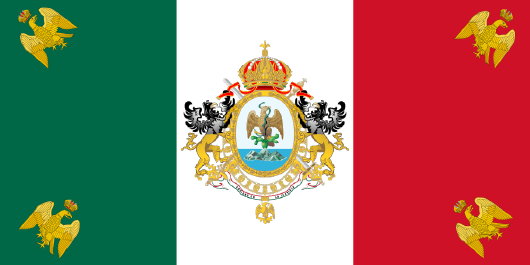
THE NEW WORLD has such a republican reputation these days. Even though there remain thirteen monarchies in the Americas, concentrated in the Caribbean, there are only three monarchs between them (all, curiously, women: Elizabeth II, Beatrix, and Margrethe II). But it’s usually forgotten that the Americas have had two great empires of their own: the Empire of Brazil in South America and the Empire of Mexico in North America.
Napoleon’s Peninsular War in Spain had caused quite a ruckus in the Spanish Americas, where liberals had seized the opportunity to wage long, rebellious wars of independence with fluctuating levels of popular support. In Mexico, two of the rebel generals, Agustín de Iturbide and Vicente Guerrero composed a plan to change the balance of power in the Spanish empire as a whole while simultaneously securing Mexican independence. The three main aims of the ‘Plan of Iguala’ were: 1) Catholicism as the established religion, 2) The independence of Mexico, and 3) The end of legal distinctions between the races; summed up as “Religión, Independencia, y Unión”.
But the larger scheme of the Plan was to convince King Ferdinand VII to move to Mexico and become Emperor of Mexico, shifting the center of power in the Spanish empire from Madrid to Mexico City. If Ferdinand would not accept, then the crown would be offered to his brother and the rest of his family down the line until someone accepted, or if even that failed then to a member of another European dynasty. (more…)
¡Viva México!
The Cry of Independence
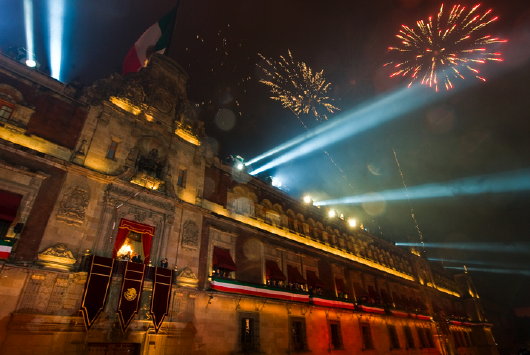
ONE OF THE established rituals of Mexico’s remembrance of her fight for independence is the Grito or “Cry of Independence”. Around eleven o’clock in the evening on the night of September 15th, the President of Mexico rings the bell of the National Palace on the Zócalo square in the center of Mexico City. The head of state hails the names of the leaders of the country’s independence struggle before shouting a threefold ¡Viva Mexico! Then, as the crowd in the plaza below goes wild, the President rings the bell again, waves the Mexican flag for all to see, and the national anthem is sung:
Gird, oh Fatherland, your brow with olive
by the divine archangel of peace,
for in heaven your eternal destiny
was written by the finger of God!
The whole thing has a strange buoyant solemnity about it, a splendid civic ritual set in the baroque surrounds of the old palace — it almost reminds one of the joyous Habemus papam from the balcony of St. Peter’s after the election of a pontiff. (more…)
Mexico’s Military Parade
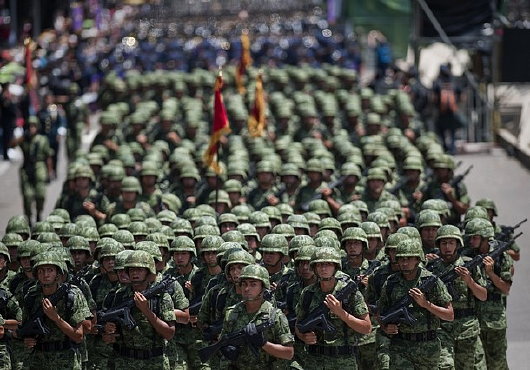
SIX-HUNDRED TROOPS, seventeen countries, field dress, full dress, and everything in between: the military parade to mark Mexico’s bicentennial was a remarkable sight to see. The parade moved down the Paseo de la Reforma, originally the Paseo de la Emperatriz, or Promenade of the Empress. The seven-and-a-half-mile-long boulevard was built on the orders of Maximilian I, Emperor of Mexico and was modelled after the Champs-Élysées in Paris and the Ringstrasse in Vienna. It stretches from the Zócalo square at the center of the city (where the Cathedral and National Palace are) to the Chapultepec Castle, the imperial residence during the Second Mexican Empire. (more…)
A Festive Flotilla
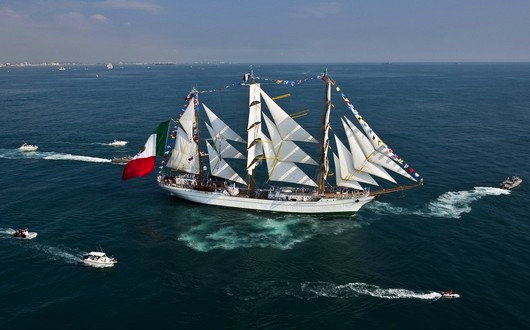
A great flotilla of tall ships from twelve countries set sail from Rio de Janiero on February 7th of this year for a months-long regatta to commemorate the bicentennial year of Mexico, Chile, and other Latin American countries. After departing Rio, “Sails of South America 2010” called in at Buenos Aires, Ushuaia, Punta Arenas, Valparaíso, and other points before finishing in Veracruz, Mexico in time for the commencement of the Mexican bicentennial in September.
ARM Cuauhtémoc (above), the training ship of the Mexican Navy, is a steel-hulled barque built in Bilbao in 1982. (more…)
A Miscellany of Mexican Music
Juan Gutiérrez de Padilla was born in Malaga, Spain in 1590 but moved to New Spain in 1620, and was appointed choirmaster of Puebla Cathedral in 1628. His corpus is massive, with over 700 works surviving. His Stabat Mater is above, but you should also hear his Missa ego flos campi. (more…)
Ciudad de México
The Greatest City of the Americas
WITH A population of 20,000,000 people, Mexico City is the greatest city in the Americas — Tokyo and Seoul are the only metropolitan areas in the world that can claim a higher count of inhabitants. The old city of Tenochtitlan was founded by the Aztecs in the middle of a lake, 7,000 feet above sea level in 1325. According to legend, Huitzilopochtli — the Zeus or Jupiter of the Aztecs — indicated the site of the new capital through an eagle perched on a cactus with a snake in its beak. The city grew as the Aztec Empire augmented in size and strength, conquering hundreds of smaller surrounding tribes, enslaving their members, and offering their prisoners as human sacrifices. With great ceremony, vast numbers of prisoners were led one-by-one to the summit of the temples, where the priest would carve the living victim’s chest open with a blade of obsidian or jade, remove the still-beating heart and offer it to the appropriate god while the victim’s body was thrown down the steps of the temple. During the re-consecration of the city’s Great Temple in 1487, the Aztecs claim to have sacrificed 80,400 prisoners over the course of four days. It is not hard to imagine the relief of the conquered tribes when their liberation came at the hands of the Spanish. (more…)
The House of Moctezuma
Noble Descendants of the Aztec Emperor
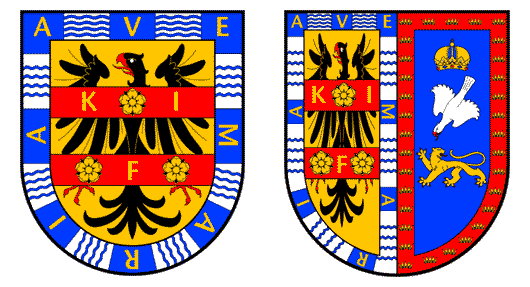
The last Emperor of the Aztecs, Moctezuma II (usually anglicised as ‘Montezuma’) suffered an ignominious end: defeated by the Spanish, some accounts have him being stoned by his former subjects, while others claim he died of starvation, refusing to eat food not worthy of an emperor, still more claim Cortés had him killed. Many of his descendants embraced Christianity and found favour from Mexico’s new overlord, the King of Spain. (more…)
Mexico Week
Over the course of this week our little corner of the web will feature a series of posts relating to Mexico, the great American nation which this year commemorates the two-hundredth anniversary of the beginning of its war of independence. That revolt was begun by a heretic priest, Miguel Hidalgo, under the influence of the contemptible ideas of “the Enlightenment”, but he nonetheless marched under the banner of the Blessed Virgin of Guadalupe, who is venerated to this day as Queen of Mexico and Empress of the Americas. This curious rebel presaged so much of the history of Mexico: rebellion and devotion, religion and irreligion.
Our ‘Mexico Week’ is not intended to give any sanction to rebel priests or violent revolt against legitimate authority, but we instead aim to take this opportunity to display to readers some of the greatness of this brilliant yet troubled nation, oft forgotten due to its rather famous and prominent neighbour to the north.
Growing up in the United States, as I did, Mexico was (and still is) often written off as a place of drug killings and drunk American college students. But digging beneath the surface one easily discovers a Mexico rich in story. ‘Mexico Week’ will by no means be a comprehensive survey of the country, its history, and traditions, but rather a little cabinet of curiosities, a Mexican miscellany if you will.
ora pro nobis!
Search
Instagram: @andcusack
Click here for my Instagram photos.Most Recent Posts
- Sag Harbor Cinema March 26, 2025
- Teutonic Takeover March 10, 2025
- Katalin Bánffy-Jelen, R.I.P. March 3, 2025
- Substack Cusackiensis March 3, 2025
- In the Courts of the Lord February 13, 2025
Most Recent Comments
Book Wishlist
Monthly Archives
Categories


